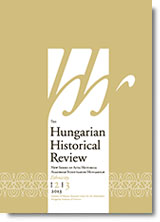Learning and Unlearning Nationality: Hungarian National Education in Reannexed Felvidék, 1938–1944
Learning and Unlearning Nationality: Hungarian National Education in Reannexed Felvidék, 1938–1944
Author(s): Leslie M. WatersSubject(s): History
Published by: Magyar Tudományos Akadémia Bölcsészettudományi Kutatóközpont Történettudományi Intézet
Summary/Abstract: Educational policy was a fundamental component of the integration of reannexed Felvidék (present-day southern Slovakia) into the Hungarian state between 1938 and 1944. In fact, the army of teachers and administrators deployed in Felvidék played a larger role in the reintegration process than Hungary’s occupying military force. The Hungarian administration’s aims were twofold: on the one hand, to instill loyalty and service to the Hungarian nation and participation in the further success of Hungary’s revisionist project, and on the other hand, to delegitimize the previous regime and encourage students to reject Czechoslovak identity. This process revolved heavily around language, making Hungarian the primary language of instruction in most of the region’s schools, devaluing knowledge of Slovak, and restricting Slovak-language educational institutions. For students in the region, the change in territorial administration resulted in a transformation in their language use. With these linguistic advantages, the Hungarian administration made tangible strides toward reintegrating Felvidék’s Hungarian students into the national body, but struggled to do so with minority students.
Journal: The Hungarian historical review : new series of Acta Historica Academiae Scientiarum Hungaricae
- Issue Year: 2/2013
- Issue No: 3
- Page Range: 538-565
- Page Count: 28
- Language: English

